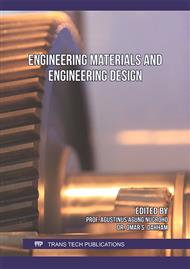p.17
p.25
p.33
p.43
p.53
p.61
p.71
p.81
p.95
Selection the Material and Analysis of Knee Joint for Smart Transfemoral Prosthetic
Abstract:
The issue of providing healthy movement for patients with lower limb amputations requires using of a well-designed lower limb prosthesis. The purpose of this work is to boost the passive prosthesis to a microcontroller-based prosthesis to provide a rotational speed that suits the function for which it is used, the boost focuses on providing a knee mechanism design by using Maxon EC motor, a socket and foot that can be obtained from previous designs. The study required to be achieved some of the basic criteria, as the proposed knee joint must have sufficient strength to bear up the weight of the amputee’s body and also have the ability to flex the knee to 900.The single parts of the knee joint was designed by using Solid Works software. The mechanism of the knee joint will be simulated after assembling each part of the design for envisage the motion of the knee prosthesis. Three materials were selected, taking into account the properties of these materials, Aluminum alloy 6061T6, Aluminum alloy 2024 and AISI4130 Steel. To find out whether the proposed model can withstand the loads, Finite element analysis using (ANSYS computer program software) the results were discussed and the model was evaluated.
Info:
Periodical:
Pages:
53-59
Citation:
Online since:
August 2023
Keywords:
Price:
Сopyright:
© 2023 Trans Tech Publications Ltd. All Rights Reserved
Share:
Citation:



